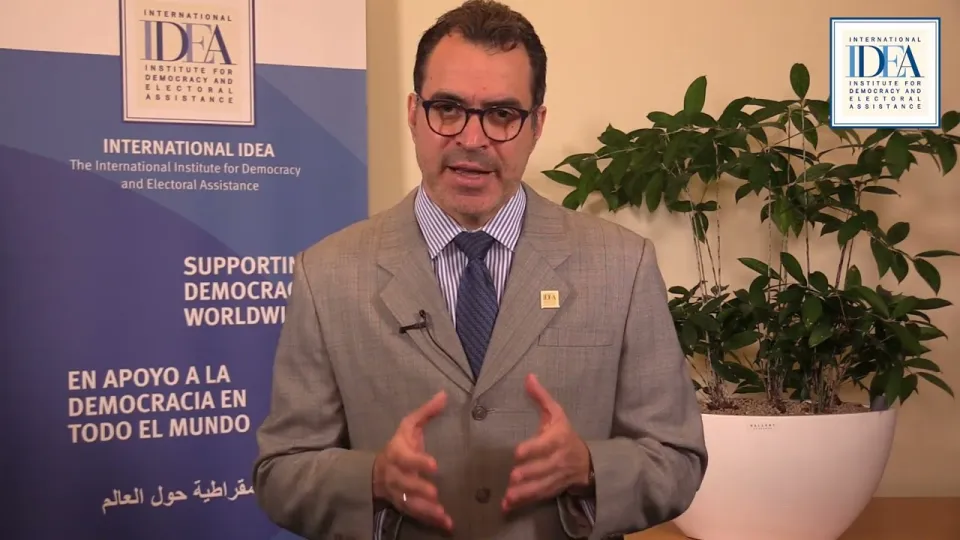International IDEA has now developed two whiteboard animation videos on what federalism is and why federalism could be a good option in particular settings.
These videos explain the core components of a federal constitution and some of the advantages and disadvantages of choosing such a system. They are meant to simplify often complex concepts, to make them understandable to the general public. Some of the key messages in the videos include the following:
- Federalism provides a way for different groups of people in different parts of the country to live together
- Federal systems have at least two levels of government, the central level and a second level that includes territorial entities into which the country is divided, e.g. regions, states, provinces.
- Federalism provides ways by which these different groups share power over common interests, but it also provides for these groups to have a level of autonomy vis-à-vis central state institutions
- Federations are protected by a constitution regarding ways in which power is shared in central state institutions, but also regarding the powers and responsibilities of both the central state and provinces, states or regions.
- But federalism is not a panacea. There are specific challenges that federalism alone cannot resolve, e.g. how to protect minorities or the fact that federalism can be expensive as you need to build institutions not only and the central, but also at the region, state, provincial level. Sometimes the different levels have difficulties coordinating policies or policy responses, such as to pandemics or natural disasters.
Video transcription: WHAT IS FEDERALISM?
1. Countries come in all shapes and sizes. They are made up of many different types of people from many different backgrounds.
2. How do we ensure that all these diverse people get sufficient political representation? One solution is a political system called federalism.
3. Only 30 of the world’s 195 countries are federations.
4. Yet, together these 30 countries represent 40 per cent of the world’s population. In other words, almost half the world’s people are governed under a federal political system.
5. But what exactly is federalism? And why might a country consider adopting a federal system?
6. The answer is that federalism provides a practical way for groups of people who have some things in common, but also some important differences, to live together.
7. They do this by sharing powers over the things they have in common – like international trade, for example. At the same time these groups maintain some level of self-rule over those things that concern their own interests, for example, education, primary healthcare and broadcasting
8 For this reason, federalism is often a choice for large countries like India, the United States, Brazil, Germany, Mexico and Nigeria. It is also often chosen by countries which have a very diverse population, living in different parts of the country, who wish to preserve their own identities. Their diversity could be ethnic, religious or linguistic. Belgium, Switzerland and Nepal are such countries.
9. As a response to these challenges of size and diversity, federalism can take various forms. And, since no single country is exactly like another, no federal system is exactly alike either. Nevertheless, federalism does have some distinct, defining characteristics which make it different from other forms of decentralisation.
10. TITLE : FEDERAL SYSTEMS HAVE TWO LEVELS OF GOVERNMENT
11. The first characteristic is that federal systems have at least two levels of government.
12. There is a central level of government (also sometimes known as the federal or union level) which governs the entire country in relation to issues of importance to everyone.
13. This usually means matters like defence, the armed forces, foreign policy, trade, citizenship, macro-economic policy, and national infrastructure like ports and airports .
14. The second level of government operates in the states, regions, provinces, or other entities into which the country is divided. Each of these has control over certain types of policy and legislation, usually of immediate relevance to its own people.
15 This often includes delivery of services such as roads and public health services and issues of cultural significance – like education and broadcasting.
16. These are of course just typical examples. The level of decentralisation and the exact distribution of powers and responsibilities varies greatly between federations depending on their needs and circumstances.
17. For example, in Nigeria, environmental protection is a state matter, but in Malaysia, it is run along federal lines.
18. In some federal systems there are powers which do not belong exclusively to either level of government but are shared between them.
19. In India, for example, both the Indian Parliament and the State Legislatures can pass laws on criminal justice and social and economic planning. But, if there is incompatibility between them, the central level of legislation prevails.
20. TITLE: SHARED RULE: INCLUSION AT THE CENTRE
21. A second characteristic of federalism is that it provides processes and mechanisms by which the different states, provinces or regions of the federation can be included in decision-making at the central (or union) level.
22. Normally, this takes the form of an upper House of Parliament, or Senate, in which these states, provinces or regions are represented.
23. In Australia and Argentina, for example, each state is represented in the Senate by an equal number of directly elected Senators; in India and Malaysia, some members of the upper house are chosen indirectly by the members of the State legislatures.
24. Power-sharing is also achieved through co-operation between different levels of government. In Canada, a Council made up of the heads of provincial governments meets to discuss issues of common interest and to coordinate service delivery. For example, although healthcare in Canada is primarily a provincial concern, the Council has enabled provincial ministers to work together to lower pharmaceutical prices across the entire country.
25. TITLE: FEDERATIONS ARE PROTECTED BY A CONSTITUTION
26. The third characteristic is that in federal systems the powers and responsibilities of the different levels of government are enshrined in a constitution which protects this federal agreement from being easily changed.
27. In many federations, the states, regions or provinces have a veto over constitutional changes, so that neither level of government can unilaterally strip the other of its powers.
28. In India, any amendments to the constitution which affects the distribution of power between the union and the states must be approved by both the central parliament and the parliaments of the majority of Indian states.
29. To protect the federal arrangement, the constitution needs to include an impartial judicial body – such as a supreme court or constitutional court – which enforces that agreement in a fair and balanced way.
30. At its heart federalism is a constitutional agreement that enables different communities of people, who live in different territories, to all live together in one country.
This agreement recognises that the country is better off united, while, at the same time, protecting the autonomy and rights of its diverse people.
ENDS




